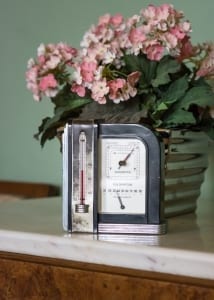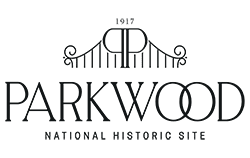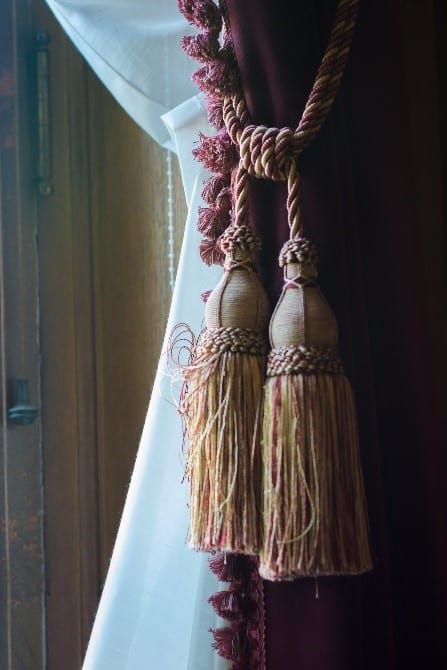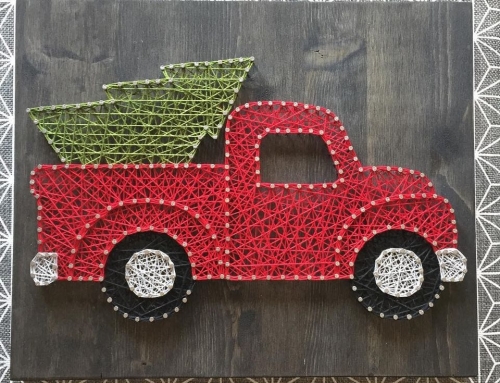Behind the heavy velvet draperies or hidden in the nooks and crannies throughout the Estate is a collection of artifact instruments to forecast and calculate the weather. Temperature and humidity are important to us today, from a curatorial perspective in terms of a preservation measure, but within our artifact collection, the Estate boasts a dozen devices for recording environmental information.
History of instruments
We have no idea if weather knowledge was a fascination of the family; if the items were just practical in nature; if the purpose for thermometers and barometers were an era-specific preservation technique for house health or if the items were novel gifts and therefore use recording the daily life and routines of weather at Parkwood. Regardless of their purpose beyond recording devices, they are an interesting item, that is rarely observed by the visiting public.
Aneroid Barometer
The Aneroid Barometer was made for the B & H.B. Kent Company, Toronto between 1895-1900 by Short and Mason, London U.K. I have always wondered if the McLaughlin’s brought this piece with them to Parkwood in 1917 from their first Oshawa home, or if this was acquired as an “antique” later. The barometer is composed of enamel and red brass and is in the captain style design. Note the moon and arrow indicator hands, perfect for a family with the sea and nautical traditions in their blood.
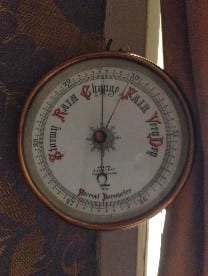
Moto-Meter Piece
In the Library, resides this interesting Art Deco piece from the Luxor Company of New York for recording outdoor temperatures. Attached to the wall, the instrument came with 15 feet of tubing which runs parallel to the side of one of the French Doors and out to the exterior of the house. The workings within the piece are designed and built by Boyce Moto-Meter, and is called a “distance type movement”.
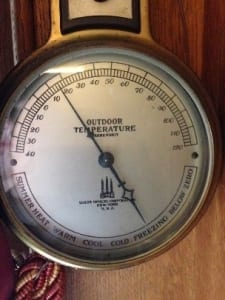
Cyclo-Stormograph
The “Cyclo-Stormograph” c.1920 was used to predict storms including potential tornadoes in the area. This piece comes with its own mahogany carrying case, from the Short and Mason Company. The display case is made from mahogany and bevelled glass.
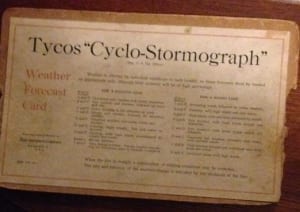
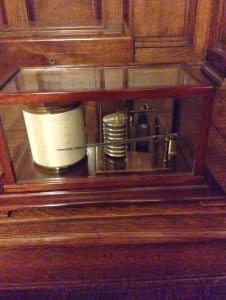
Barometer
The intricate simplicity of this piece is what makes it so interesting. The barometer plate itself changes shape with the rising pressure. As it changes the thin bar moves and makes the arm go up and down accordingly. The cylinder spins and the changes are recorded. The “pen” on this is more of a trough that comes to a point marking the 7-day clock drum. There is a small ink well on the back-right corner which holds the ink for marking. Below is the card which is located within the carrying case, indicating how to read the recordings. Better yet, from the curatorial perspective, is the next photograph with the handwritten notation found on the reverse side of the card on where the family could purchase supplies, including more ink, for the stormograph in the future, reading Taylor Instruments Co., 180 Church St, Toronto.
